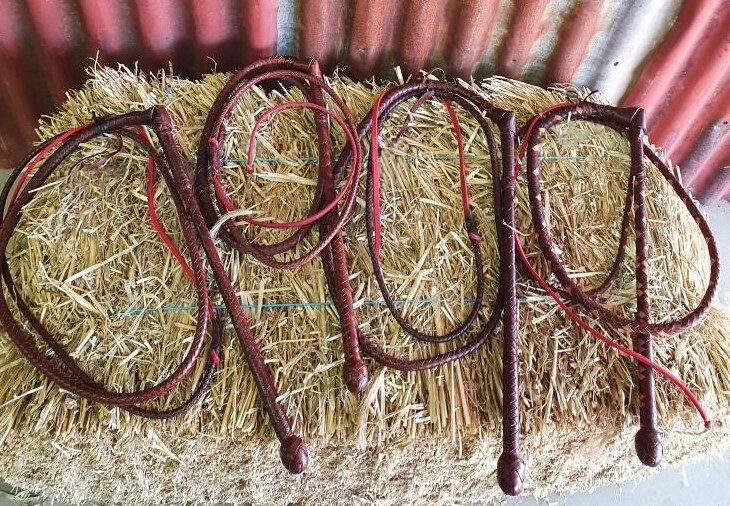How to Crack a Whip
Author: Gracie Date Posted:30 June 2023
The stockwhip - the most common type of whip used in Australia - is said to have originated from the English hunting whip.
It has definitely evolved into a very different whip, designed to move herds of cattle with a crack that encourages them to keep moving. They're also handy to send snakes on their way and to lead horses in a pinch!
 Now for the Important stuff! How to Crack a Whip...
Now for the Important stuff! How to Crack a Whip...
The crack of a whip - believe it or not - is a mini sonic boom! How cool is that? This sonic boom occurs when the very tip of the whip moves faster than the speed of sound, and so breaks the sound barrier. Bearing that in mind, I suggest that you maybe don't get cracking in your suburban backyard at night... Someone called the police on my brother and his mates once (many moons ago) believing that the cracking was actually gunfire! I know that most country people will pick the difference immediately, but suburbanites... not so much...
Apart from being an integral part of farming life in Australia, whip cracking is also considered a sport. Anyone can give it a go - it's great fun for all the family! In fact fifty-two members of the Australian Whipcrackers & Plaiters Association performed in the Opening Ceremony of the 2000 Sydney Olympic Games, showcasing the iconic Aussie stockwhip to the world.
Ready to give a stockwhip a crack? Well, it takes some practice, but when you get it right... it's a cracker!
Here's a few tips:
Safety First!
Always practice whip cracking outdoors and clear from any people, animals or obstacles.
Safety glasses and earplugs are recommended.
A wide brim hat is also recommended - and having the look may just help you channel your inner whipcracking champion!
1. Hold the whip correctly
Place your feet a shoulder-width apart and hold the whip firmly with your dominant hand.
2. Place the whip in the starting position
Make sure the whip is not tangled or bunched, trailing straight back behind you and perpendicular to your hips. The whip must always be safely behind and to the side of your body. It does not need to be perfectly straight but make sure the whip won't catch your legs as you bring it into snapping position.
3. Practise smoothly bringing the whip straight up in the air
With a firm grip, bring your arm straight up to the 12 o’clock position with the whip pointing at the sky. Keep the elbow locked up with the motion and your arm straight. To get the crack, let your elbow bend naturally and snap your arm down in front of you, keeping the whip clear of your body. Practise bringing the whip up smoothly and let the weight of your arm fall. It should be a swift and smooth action.
4. Creating the “loop”
The crack of the whip comes from one part of the whip travelling in one direction along a straight plane while the other end of the whip is travelling in the opposite direction. This is the loop of the whip. As the the handle of the whip is straight up, the end of the whip should still be close to the ground and travelling upwards. As the handle is flicked downwards, the end of the whip moves toward the point where the handle once was and will “crack” as it changes direction. Continuing the loop is essential to getting a good crack. Having the whip in the right starting position is also important.
5. Keep a straight line
The whip will not crack unless you maintain the straight line. It can be horizontal or vertical but it needs to be in a straight line to get that distinctive cracking sound. If the whip fails to crack, ensure that you are bringing it up high enough with the initial motion.
Allingtons have a great range of Australian made whips and spare parts. Click on the images to view them on our webstore!
Info from: https://www.wikihow.com/Crack-a-Whip







